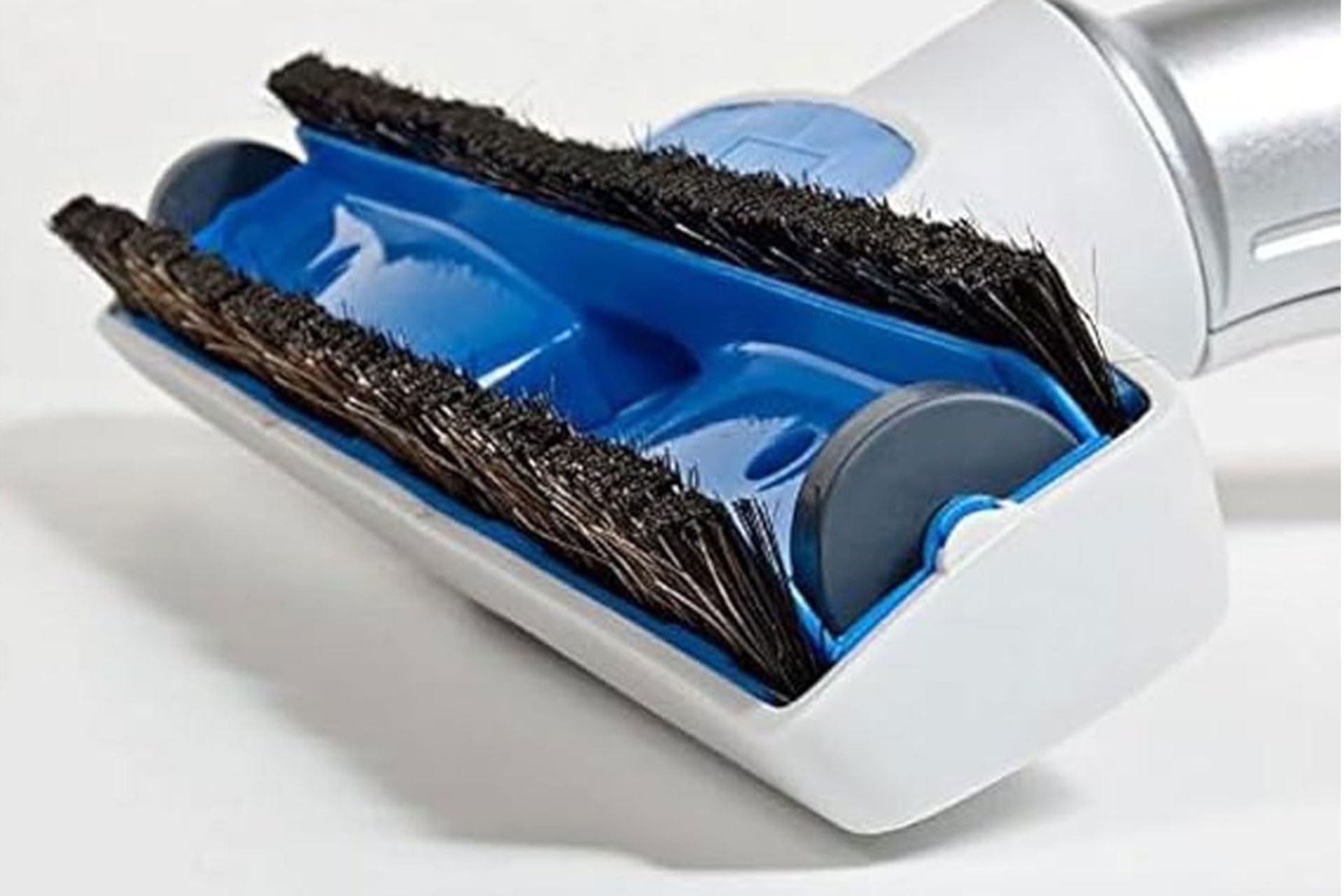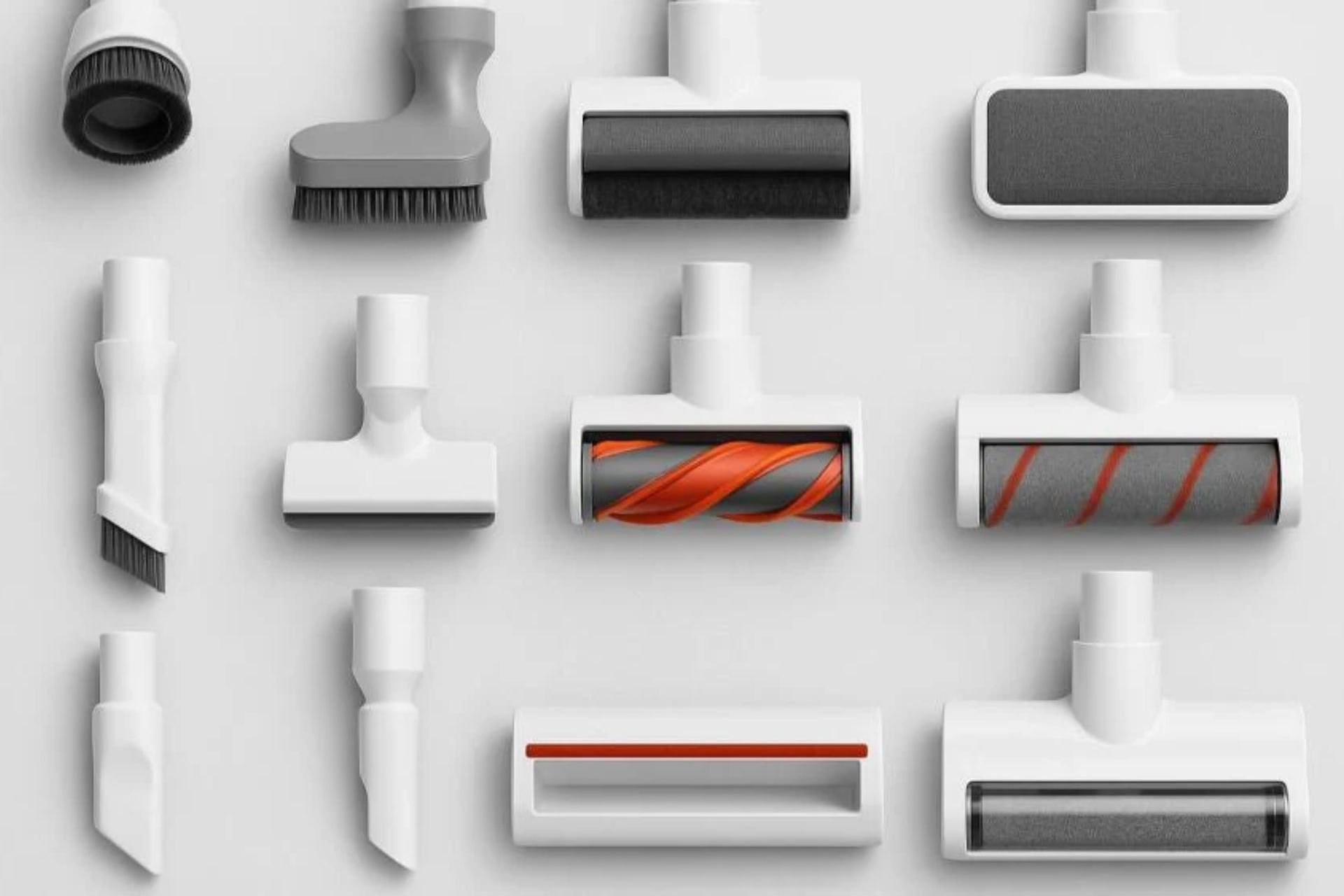Introduction
A Vacuum Brush plays a far more important role in cleaning performance than most people realize. While suction power gets much of the attention, the brush determines how effectively dirt is lifted, how deeply carpets are agitated, and how well debris is collected on different floor types. Whether you own a stick vacuum, upright model, or canister system, the brush is the part that physically contacts the surface—so understanding its design, purpose, and limitations is essential. This comprehensive guide explores every aspect of the vacuum brush so you can make smarter cleaning decisions and maximize your vacuum’s potential.

What Is a Vacuum Brush and Why It Matters
A vacuum brush is an attachment or built-in component that stirs carpet fibers, lifts debris, and directs dirt toward the suction pathway. It can appear as a rotating brush roll, a soft dusting head, or a multi-surface tool depending on the vacuum type.
Why the Vacuum Brush Is Essential
- It loosens embedded particles for efficient removal.
- It increases cleaning speed by gathering debris quickly.
- It improves edge cleaning and contact with surfaces.
- It enhances vacuuming results on carpets, rugs, and upholstery.
Without a functioning vacuum brush, suction alone often fails to remove hair, sand, and deep-down particles.
How a Vacuum Brush Works: The Complete Breakdown
Understanding the mechanism behind a Vacuum Brush helps you see why it affects cleaning performance so dramatically.
1. Mechanical Agitation
The primary purpose of any brush head is agitation—the physical movement of bristles against surfaces. When the brush turns, it dislodges dirt embedded in fibers so the airflow can capture it. This makes it vital for carpets and rugs.
2. Debris Direction and Airflow Support
Brushes guide particles to the suction port. Without structured feeding, dirt may scatter or stay trapped inside fibers.
3. Motor or Air-Driven Technology
Brushes operate using:
- Motorized brush rolls, powered by dedicated drive motors
- Turbo-air heads, rotated by airflow
- Passive brushes, used for dusting or delicate surfaces
Motorized brushes deliver the deepest clean but consume more energy. Turbo heads balance efficiency and performance.
4. Brush Speed and Torque
Rotation speed influences agitation. High-torque brushes remove stubborn debris effectively, while slower brushes protect delicate surfaces.
Types of Vacuum Brushes and Their Ideal Uses
Different surfaces and cleaning needs require different brush designs. Knowing which type to use transforms the cleaning experience.
1. Standard Rotating Brush Roll
Often found in upright and canister vacuums, this brush uses stiff bristles to penetrate carpet fibers and extract heavy debris.
Best for:
- High-pile carpets
- Rugs
- Homes with heavy dirt or pet hair
2. Soft Roller Brush
This brush uses microfiber-covered rollers to pick up fine particles and large debris on hard floors. It’s gentle and highly efficient.
Best for:
- Hardwood floors
- Laminate and tile
- Dust-heavy areas
3. Combination or Multi-Surface Brush
A vacuum attachment with variable bristle density designed to clean both carpets and hard floors without constant head-switching.
Best for:
- Households with mixed flooring
- Lightweight daily cleaning
4. Turbo Brush or Air-Driven Brush
These heads spin using suction airflow. They’re lighter than motorized brush heads but still offer solid agitation.
Best for:
- Low-pile carpets
- Stairs
- Quick cleaning tasks
5. Mini Motorized Brush
Compact motorized heads ideal for furniture, car interiors, pet beds, and mattresses.
Best for:
- Pet hair removal
- Upholstery cleaning
- Vehicle detailing
6. Dusting Brush
Soft bristles arranged in a circular or oval shape help remove dust from delicate surfaces.
Best for:
- Electronics
- Shelves
- Blinds
- Picture frames
7. Crevice Brush
A narrow nozzle with small bristles designed to access gaps and edges.
Best for:
- Baseboards
- Window tracks
- Corners
Vacuum Brush Design Components: What Makes Them Effective
A Vacuum Brush is more sophisticated than it appears. Several design factors determine how well it performs.
1. Bristle Material
Common materials include:
- Nylon – Durable and versatile
- Microfiber – Smooth and ideal for dust
- Rubber fins – Superior hair pickup
- Natural fibers – Gentle on delicate surfaces
2. Brush Roll Diameter
Larger diameters move more debris per rotation, improving efficiency on thick carpets.
3. Bristle Density and Layout
Dense bristle patterns agitate more deeply, while spaced bristles move airflow more effectively.
4. Brush Speed Control
Premium models offer variable speed settings to protect delicate surfaces or increase carpet performance.
5. Anti-Tangle Technology
Modern brushes use:
- Rubberized blades
- Hair-detangling combs
- Dual-brush systems
These prevent strands from wrapping around the brush roll.
Vacuum Brush for Different Floor Types
Understanding which Vacuum Brush suits each floor allows you to protect surfaces, enhance performance, and avoid damage.
1. Carpeted Floors
Use a stiff-bristled rotating brush roll. Agitation is crucial for removing embedded dirt, sand, and hair.
2. Hardwood Floors
Soft roller brushes prevent scratches and lift both fine dust and large debris.
3. Laminate, Vinyl & Tile Floors
Multi-surface brushes are usually safe, but soft rollers provide the gentlest and most thorough clean.
4. Rugs and Delicate Fabrics
Use motorized brushes with slower speed settings or switch to a turbo head.
Do You Need Multiple Vacuum Brushes?
Most households can benefit from owning more than one brush head. For example:
- Homes with pets need a mini motorized brush.
- Homes with hard floors need a soft roller brush.
- Homes with mixed surfaces need a multi-floor brush.
Switching heads ensures the right level of agitation, surface protection, and cleaning efficiency.
Common Problems With Vacuum Brushes and How to Fix Them
1. Brush Roll Not Spinning
Possible causes:
- Jammed debris
- Broken belt
- Motor malfunction
- Hair tangles
Solution:
Clean the brush roll, inspect the belt, and ensure no obstructions exist.
2. Loss of Suction in Brush Head
Often caused by:
- Clogged air pathways
- Blocked bristle ports
- Dust buildup
Solution:
Clean pathways, rinse filters, and check the hose connection.
3. Unusual Noise or Vibrations
Loose parts, damaged bristles, or trapped debris can cause shaking.
Solution:
Tighten screws, remove debris, and check balance.
4. Brush Scratching Floors
Hard bristles may damage sensitive surfaces.
Solution:
Switch to a soft roller or softer dusting brush.
How to Maintain Your Vacuum Brush for Long-Term Performance
Proper maintenance extends the life of the Vacuum Brush and helps the vacuum perform like new.
1. Remove Tangled Hair Regularly
Hair wrapped around brush rolls reduces performance and strains the motor.
2. Clean Bristles With Warm Water
Use mild soap for dusting brushes and soft rollers. Allow them to dry fully.
3. Replace Worn Brushes
Brushes lose effectiveness over time. Replace them every 6–18 months depending on use.
4. Keep Bearings and Rollers Clean
Dust buildup around bearings can slow rotation.
5. Check for Cracks or Damage
Cracked brush rolls may vibrate excessively or scratch surfaces.
Vacuum Brush and Pet Hair Removal: What You Need to Know
Pet owners rely heavily on the Vacuum Brush to manage hair shed and dander.
Best Brushes for Pet Hair
- Mini motorized brushes for sofas and beds
- Main motorized brush rolls for carpets
- Rubberized fins for hair collection
- Tangle-free multi-surface brushes
These options prevent clogging, improve brush longevity, and eliminate stubborn strands.
Vacuum Brush Compatibility Across Models
Not all brushes fit every vacuum. Important considerations include:
1. Attachment Design
Different brands use proprietary locking systems, widths, or hose sizes.
2. Motor Requirements
Some brush heads require electrical connectors for motor power.
3. Floor Type Compatibility
Using the wrong brush on hard floors may cause damage.
4. Vacuum Power Level
High-suction vacuums need sturdy brushes that withstand strong airflow.
Before buying a replacement Vacuum Brush, check your model number and compatibility list.
How to Choose the Right Vacuum Brush for Your Home
Selecting the correct Vacuum Brush is easier when you consider your household’s needs.
1. Identify Your Floor Types
Choose a soft roller for hard floors, rotating brush for carpets, or combination head for mixed surfaces.
2. Consider Pet Ownership
Look for hair-detangling features and motorized mini heads.
3. Evaluate Your Vacuum’s Suction Power
High suction requires durable brushes to prevent surface damage.
4. Check the Cleaning Frequency
Frequent cleaning benefits from easy-to-maintain brushes.
5. Look for Ease of Replacement
Brushes with removable rollers simplify maintenance.
Signs You Should Replace Your Vacuum Brush
A worn or damaged brush seriously affects cleaning performance.
Replace the Vacuum Brush if:
- Bristles look frayed or bent
- Brush roll vibrates strongly
- The vacuum leaves debris behind
- The brush makes unusual noises
- The bristles touch the floor unevenly
Replacing a worn brush often restores a vacuum’s lost power.
Vacuum Brush Innovations: What’s New in Modern Designs
Manufacturers are continually improving brush technology.
Latest Innovations:
- Anti-tangle brush rolls with comb-like structures
- Dual roller heads combining soft and stiff brushes
- Rubber fin designs for improved pet hair pickup
- Smart sensors that auto-adjust brush speed
- Noise-reducing brush housings
- Brush rolls with LED headlights
These innovations enhance usability, efficiency, and user comfort.
Vacuum Brush Cleaning Techniques for Best Results
1. Deep Cleaning a Motorized Brush Roll
Remove the brush, cut tangled hair with scissors, wipe bristles, and clear housing ports.
2. Cleaning Soft Rollers
Hand-wash with warm soapy water, rinse thoroughly, and air dry.
3. Dusting Brush Maintenance
Shake loose dust, wipe gently with microfiber cloth, and sanitize if needed.
4. Turbo Brush Care
Remove the spinning module and clean internal airflow channels.
How the Vacuum Brush Affects Energy Efficiency
Brushes impact power usage. Motorized heads consume more electricity, while airflow-driven turbo brushes reduce consumption. Soft rollers require less force but still deliver impressive cleaning on hard floors.
To maximize efficiency:
- Use the correct brush for each surface
- Switch off brush rolls when not needed
- Clean debris regularly to reduce resistance
Vacuum Brush Safety Tips
Using the wrong vacuum brush can damage surfaces or shorten device lifespan.
Safety Guidelines:
- Avoid motorized brushes on silk or delicate fabrics
- Do not use stiff bristles on polished hardwood
- Avoid water exposure unless specified
- Keep fingers away from spinning brush rolls
- Disconnect power before maintenance
Vacuum Brush Storage Best Practices
To extend lifespan:
- Store brush heads in dry areas
- Keep soft rollers away from sharp objects
- Use storage bags or compartments
- Clean brushes before storing
- Avoid direct sunlight exposure
When to Use the Vacuum Brush vs. When to Turn It Off
Many vacuums allow you to disable the brush, especially cordless stick models.
Turn On the Brush For:
- Carpets
- Rugs
- Pet hair
- High-traffic areas
Turn Off the Brush For:
- Hardwood floors
- Delicate or polished surfaces
- Lightweight mats
Using the right mode improves durability and prevents scratches.
Conclusion
A Vacuum Brush is the key component that determines how effectively your vacuum cleaner performs across carpets, hard floors, and furniture. From brush roll mechanics to soft rollers, turbo heads, and dusting tools, each type serves a unique purpose that enhances cleaning results and surface care. By understanding how the Vacuum Brush works, how to maintain it, and how to select the best one for your home, you can dramatically improve cleaning efficiency and prolong the life of your vacuum. With this knowledge, every cleaning task becomes easier, faster, and more effective—thanks to the power of a well-designed Vacuum Brush.
